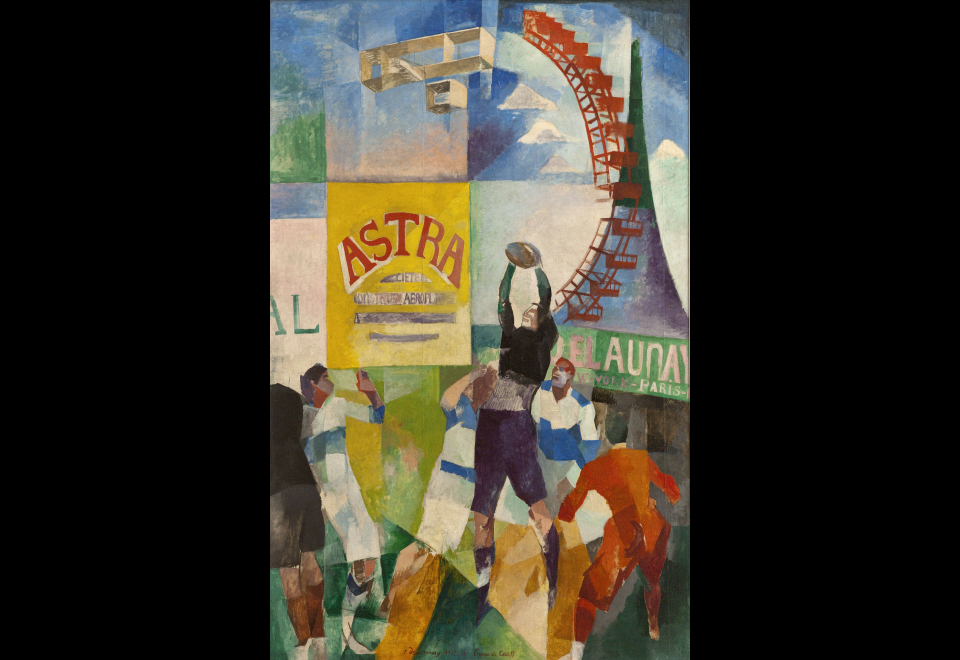Cultural OlympiadPermanent collection
From to
Beware
Carte blanche à Ari Marcopoulos
From April 5
The Musée d'Art Moderne de Paris is giving carte blanche to artist Ari Marcopoulos, a photographer and filmmaker emblematic of the New York underground, dedicated to offer a fresh view on the world of skateboarding. For the first time at the Museum, his work Brown Bag is being presented in a special installation. In the same way that he looks at his subjects from both an insider's and an artist’s perspective, Ari Marcopoulos is also proposing a fresh reading of certain works in the MAM collections, through the filter of the counter-cultures he is so familiar with.
Modern life
Art and Sport tour
Matisse's monumental triptych La Danse (1930-1933) addresses a theme favoured by the artist in many of his compositions since the early 20th century. The larger than life silhouettes of the dancers are athletic, their musculature is highlighted and their bodies leap out of the composition, implicitly reaching beyond the painted panels. As Matisse explained, this physical fragmentation allowed him to suggest " the idea of immensity in a limited space". The energy of the six dancers resonates with the bands of pink, blue and black that enliven the composition, in a powerful symbol of joie de vivre.
Painted at the very beginning of the 20th century, Robert Delaunay's The Cardiff Team (1912-1913) brought sport (rugby, but also the burgeoning activity of aviation) and advertising into history painting, in a Cubist vein, making this an emblematic work of the painterly avant-gardes. Previously, the traditional subjects of large-format paintings were drawn from the past: mythology, history or religion.
Enrico Prampolini's Le Charmeur de vitesse (1930) demonstrates the Italian Futurists' predilection for subjects celebrating a dynamic modernity based on technological advances. The painting depicts a long-distance runner seemingly transformed by his own motive power as it sweeps him upwards. In his "'aeropainting" manifesto, which reveals his passion for flight, the artist cites this work as an example, calling for a surpassing of the limitations of earthly reality. Here, aerodynamic impetus brings liberation from gravity.
In Marcel Gromaire's paintings men and women practise boxing, weightlifting, tennis and canoeing, illustrating the way sport evolved into a leisure activity in its own right from the mid-1920s onwards. In France clubs and associations were springing up everywhere, and under the impetus of the paid holidays introduced by the Front Populaire government, sporting and other outdoor activities soon spread to all social classes.
Created by Jean Dunand to decorate the smoking room of the liner Normandie in 1935, the monumental Sports panel is a key work of Art Deco. Its theme is the games of antiquity and Spartan education, with their emphasis on endurance and excelling oneself. Aligned in a generous diagonal, young athletes – both men and women – practise the javelin, discus and shot put. The ascending analysis of the javelin throwers' gestures creates an impression of depth and dynamism. The recessed relief and the gilding - both of which capture the light - plus the delicate modelling and the hieratic figures, shown in three-quarter view with the torso facing outwards, are reminiscent of Egyptian bas-reliefs.
Ceramist Emile Louis Braquemond and painter Octave Guillonnet designed commemorative vases to be presented to the winners of events at the Olympic Games in Paris in 1924. Produced by the Manufacture de Sèvres, they are decorated with 4 medallions representing 4 sporting disciplines, including diving and football.
Raoul Dufy painted all sorts of outdoor activities in the breezy pastel colours that were his trademark. In these scenes of horse riding, regattas and boat races from the 20s and 30s, sport is portrayed as a celebration.
The exhibition closes with The Athletes (2022) by Katherine Bradford. Without referring to any particular sport, the American artist depicts a ball game played by a frieze of interlinked characters who carry, touch and push each other in a gymnastic display of bright, jaunty colours. The artist's focus is on the values of sharing and collective activity that bring human communities together.

Robert Delaunay
The Cardiff Team, 1912-13
Musée d'Art Moderne de Paris

Marcel Gromaire
Dumbbells, 1926
Musée d'Art Moderne de Paris

Marcel Gromaire
Tennis by the Sea, 1928
Musée d'Art Moderne de Paris

Raoul Dufy
The Rowers, vers 1932
Musée d'Art Moderne de Paris

Jean Dunand
Musée d'Art Moderne de Paris

Katherine Bradford
The Athletes, 2022
Musée d'Art Moderne de Paris

